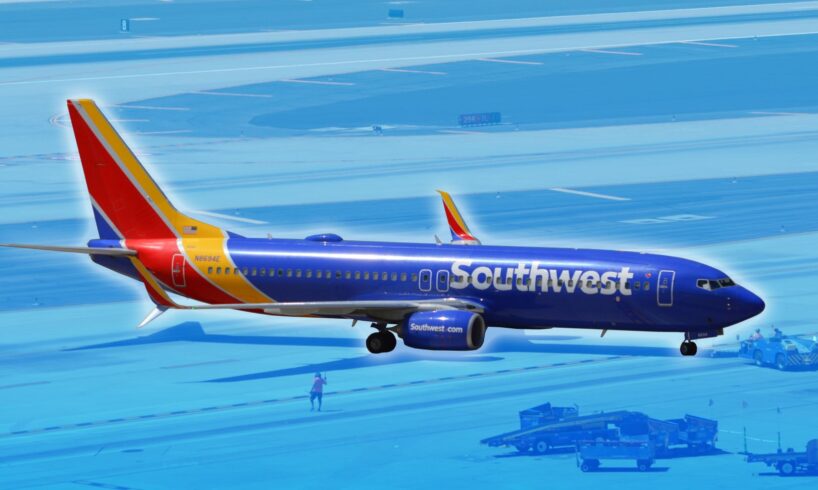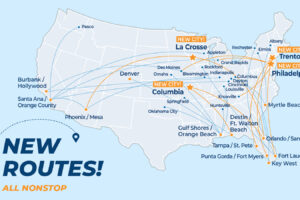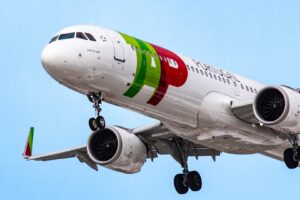
Southwest Airlines
has had a bit of a rough go over the past three years. Following an operational meltdown in 2022 that hamstrung the airline for months and led to extensive financial losses, the carrier has been one step behind its major competitors for years now. Last summer, the matter worsened significantly when activist investment management fund Elliott Global Management, a company that had bought up around a 10% share in the company, began to publicly pressure the carrier’s management into changing its ways.
Southwest Airlines
IATA/ICAO Code
WN/SWA
Hub(s)
Baltimore/Washington International Thurgood Marshall Airport, Dallas Love Field, Denver International Airport, Harry Reid International Airport, Hartsfield-Jackson Atlanta International Airport, Houston Hobby Airport, Los Angeles International Airport, Midway International Airport, Oakland International Airport, Orlando International Airport, Phoenix Sky Harbor International Airport
Year Founded
1967
CEO
Robert Jordan
Country
United States
Expand
Investors, who had previously maintained extremely bearish expectations for the carrier, have been pleasantly surprised by the carrier’s performance in recent months, with the airline outperforming the industry and many of its competitors by a considerable margin. Despite broad economic uncertainty and continual fears of a recession mounting, Southwest Airlines has consistently returned higher profits to investors than many of its competitors over the past few months.
The Carrier’s Outperformance Has Gone Somewhat Under The Radar
Photo: Robin Guess | Shutterstock
Amid global economic uncertainty that resulted from Donald Trump’s trade war and increased geopolitical tensions in the Middle East and Eastern Europe, the aviation industry had one of its weakest quarters since the pandemic started the year. As a result, airlines adjusted their growth targets and lowered their earnings forecasts, maneuvers which resulted in a significant reduction in investor confidence in many major airlines.
Over the past few months, major legacy carriers have gone from forecasting record earnings to expecting significantly faster growth over the next twelve months. Carriers like Delta Air Lines and United Airlines both had stocks trading at post-pandemic highs, and even the problem-struck American Airlines was looking like it had now found a way to consistently turn a profit. Since early February, all of these carriers’ stocks have taken a significant tumble, with all falling by more than 30%. Some airlines, including multiple major low-cost carriers, have seen share prices fall by numbers exceeding 40%, and bankrupt Spirit Airlines even had its stock delisted from major exchanges as a result.
Photo: Southwest Airlines
Southwest Airlines has, by contrast, actually had quite a different trajectory. The airline has been able to mitigate many of the impacts of this period of economic uncertainty, or at least investors seem to believe it has. Southwest Airlines’ shares have only declined around 15% in value since the start of February, making it one of the few major airlines to return losses to investors of less than 20%. While roughly 15% losses may not seem that appealing to the average retail investor, the carrier’s ability to exceed expectations has led it to perform significantly better than its principal competitors.
So How Exactly Has Southwest Been Able To Outperform The Industry?
Photo: MKPhoto12 | Shutterstock
The simple answer to this question is that Southwest has been able to achieve this performance by changing dramatically. Since coming under the influence of Elliott Management, Southwest Airlines has changed significantly. Last year, the activist investment manager began to buy up shares in the airline until it had enough of an interest (exceeding 10%) that it could officially call an emergency meeting of shareholders. This allowed the activist investment manager to place significant pressure on the carrier, with many of the airline’s management decisions being at the core of Elliott’s complaints.
Eventually, the two parties were able to completely settle their differences, with the airline agreeing to appoint five new Elliott-approved board members to positions of power. Furthermore, the carrier elected to appoint Rakesh Gangwal, the reputable entrepreneur who launched Indian low-cost giant IndiGo, as the airline’s new chairman. These moves significantly changed the leadership and management team at Southwest Airlines, which had previously consisted mostly of long-term company veterans.
This new board has shifted the company’s overall sentiment and corporate identity in a few key ways. The airline, which had historically been customer and employee-oriented, has now become financially results-oriented like most of its other competitors. The airline’s latest moves have eliminated traditional practices, which confirmed the carrier as one of the most employee-oriented in the market. Despite the potential unpopularity of these moves, it is safe to say that they certainly have had their impact on the airline’s bottom line and how others view the carrier.
Southwest Has Made A Few Big Moves, Which Inspired Investor Confidence
Photo: Felix Mizioznikov | Shutterstock
Southwest Airlines has historically had two major customer benefits that were long seen as core to its brand. The first of these was its iconic “Bags Fly Free” policy, which allowed all passengers on all kinds of tickets two free checked bags to any destination. The carrier has now decided that it will be eliminating this benefit this upcoming May, a move which has been met with extensive passenger displeasure.
The move has been seen by many as the carrier “Slaying The Sacred Cow,” and competitors have been quick to see how they might be able to capitalize on Southwest’s decision. However, the bag fees that the airline will soon be charging could generate millions in additional revenue every single day, something which could help the carrier improve its profitability picture. Time will have to tell whether this kind of move is going to have a significant impact on Southwest’s ability to retain passengers. In the short run, however, financial analysts are certainly excited about the prospect of having the carrier generate consistently higher revenues.
In the eyes of Southwest’s new management team, there is no reason for an airline to offer passengers two free checked bags when none of its competitors offer one free checked bag, let alone two. Furthermore, this move demonstrates the carrier’s belief that if passengers are going to check bags anyway when flying, they will likely be willing to pay for it regardless. In addition, passengers with elite status and certain Southwest Airlines credit cards will also still be eligible for these benefits.
Related
Why Doesn’t Southwest Airlines Fly To Newark Or New York-JFK?
The carrier has a minimal presence in the New York Area.
Southwest Made A Pivotal Decision The Repercussions Of Which Are Not Yet Clear
Photo: Markus Mainka | Shutterstock
In addition to being an airline that had previously exclusively operated uniform Boeing 737 aircraft, the carrier had not previously maintained an assigned seating policy. Passengers had historically been advised to show up at the gate early, as seating would be assigned on a first-come-first-served basis. This supported the carrier’s original vision of having high-frequency flights with very quick turnaround times.
When passengers are forced to choose their own seats based almost exclusively on how quickly they get on the plane, they will almost always show up to the gate early and get into an orderly line. This system did undoubtedly have its benefits, and Southwest reaped the rewards of these benefits for decades. Passengers would get on planes quickly, take their seats, and allow for boarding to continue with efficiency, with few interruptions like passengers walking back and forth through the aisles.
However, the drawbacks of this system are also quite clear. The airline cannot charge more for seats that may have extra legroom (like emergency exit seats) or for those closer to the front of the plane. As a result, the carrier has been put in a position where it believes that changing its system to include premium seats with extra legroom, which it can charge more for, would put it in a better position than keeping its old system. The market has clearly looked somewhat positive on these changes.
The Carrier Has Also Undergone Some Organizational Restructuring Efforts
Photo: Angel DiBilio | Shutterstock
Over the past few months, the airline has also made some moves to demonstrate its commitment to organizational restructuring. Not only has the carrier decided to enforce a new rule that corporate bonuses for executives must be approved by shareholders, but it has also executed its first mass layoffs in its history, firing a large portion of its corporate workforce.
The airline has no intention of abandoning its path towards growth, however. The carrier has not fired any operational staff and has continued to launch new flights, despite its challenges, a move which has certainly inspired market confidence.
For example, the carrier decided to open a massive new crew training base in Denver, demonstrating its commitment to expansion at key operating bases. Southwest now wants to grow, and it will be doing that in a much less customer and employee-oriented manner, something which the market has certainly been quick to see in a positive light.
Related
Why Does Southwest Airlines Serve Chicago O’Hare?
With a major base at Midway Airport, why bother serving an airport just 30 miles away?






